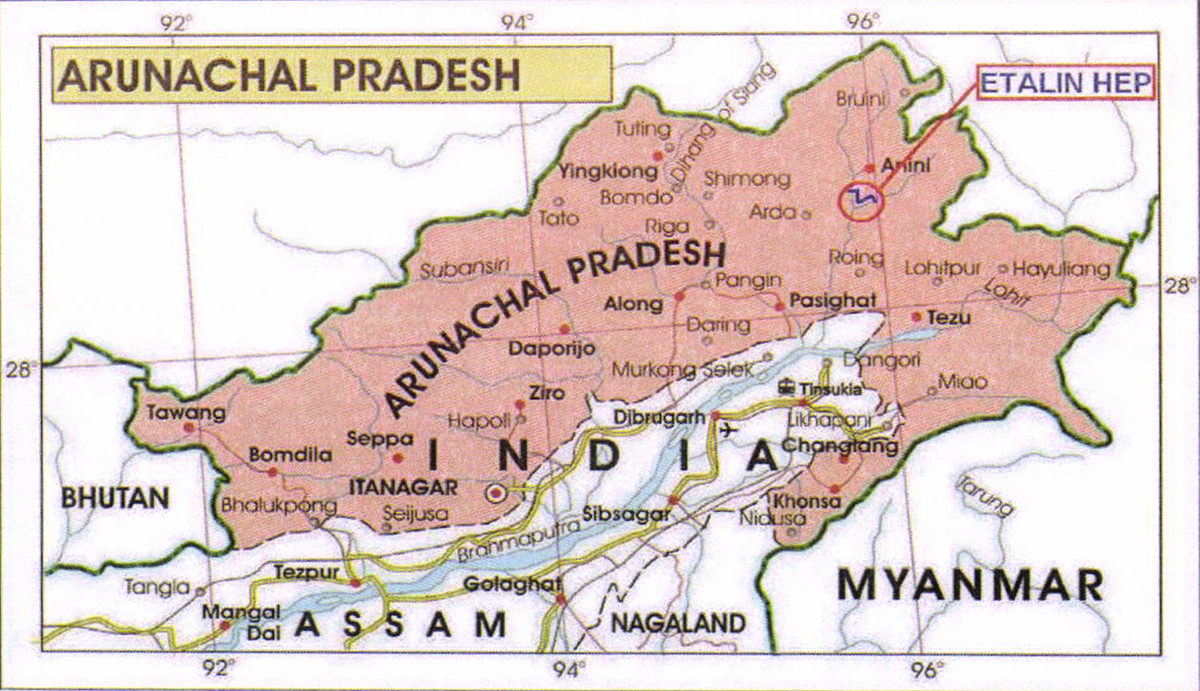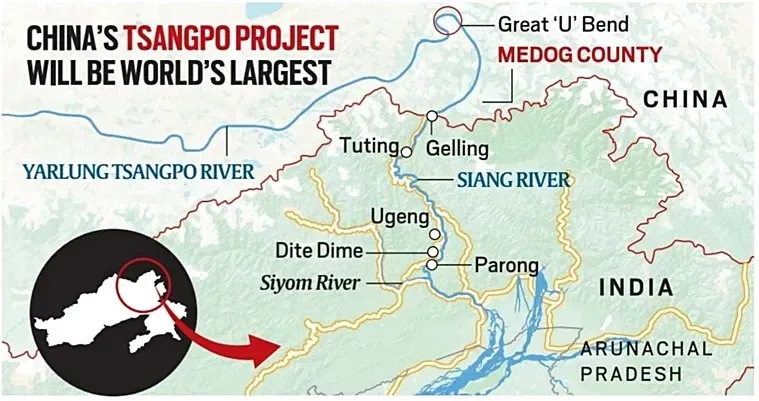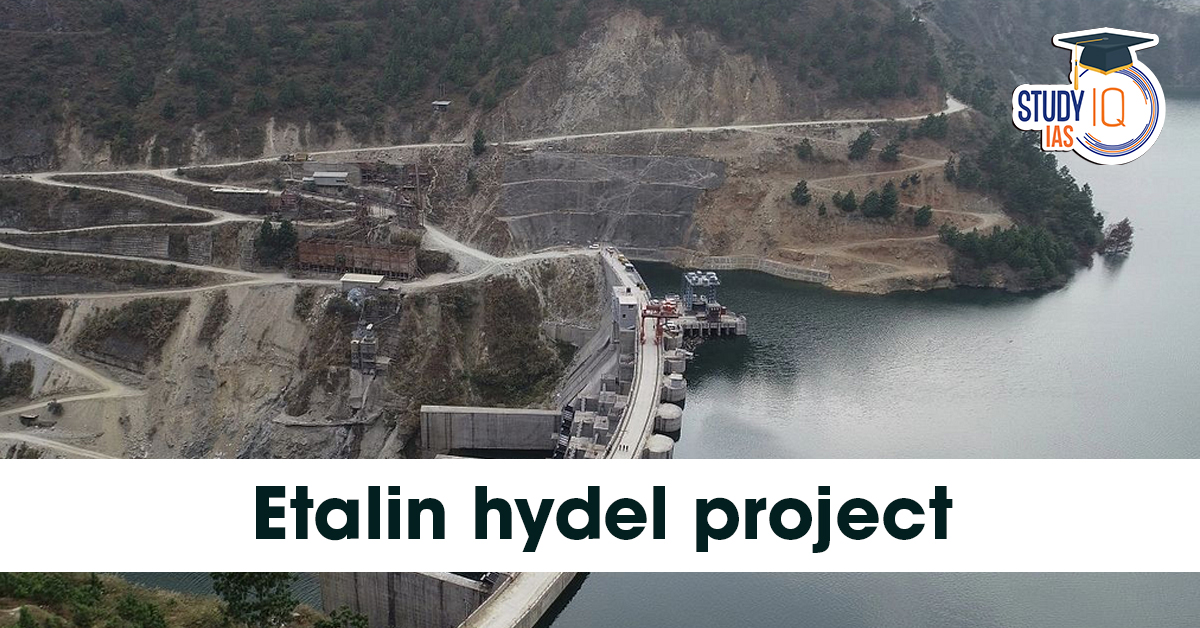Table of Contents
Context: The Union Environment Ministry is set to evaluate the environmental clearance for the 3,087 MW Etalin dam project in Arunachal Pradesh’s Dibang Valley, just days after China initiated construction of what is expected to be the world’s largest hydroelectric dam upstream on the Yarlung Zangbo (Brahmaputra) river.
Etalin Hydroelectric Project
Etalin Hydroelectric Project is a 3,097 MW mega hydropower project in Arunachal Pradesh’s Dibang Valley, comprising two dams on the Dri and Talo rivers and an underground powerhouse. It was cleared by the Forest Advisory Committee in 2025 despite concerns about biodiversity, and has started the first-phase land compensation worth ₹269.97 crore. Commissioning will be in December 2033.
Location & Capacity
Planned in Dibang Valley, Arunachal Pradesh, with an installed capacity of 3,097 MW, making it one of India’s largest proposed hydropower projects.
Project Structure
- Combines two run-of-the-river schemes, involving the construction of two concrete gravity dams (101.5 m and 80 m high) on the Dri and Tangon rivers (tributaries of Dibang River).
- Will divert water via gravity dams without major storage.

Ecological Sensitivity
- Located in a biodiversity hotspot within the “richest biogeographical province” of the Himalayan zone.
- Involves diversion of 1,175 ha of forest land with felling of ~2.7 lakh trees
Tribal Presence
The region is home to Idu-Mishmi tribes, an indigenous community with deep cultural and ecological ties to the area.
Executing Body
The project is managed by Etalin Hydro Electric Power Company Limited, a joint venture between:
- Jindal Power Limited (74% stake)
- Hydro Power Development Corporation of Arunachal Pradesh Ltd. (26% stake – a state government undertaking).
China’s Mega Dam on Brahmaputra
China has launched an ambitious and contentious “mega dam” on the Yarlung Tsangpo River (the Brahmaputra in Tibet), evoking major concerns among downstream nations, especially India and Bangladesh.
- Construction began in mid-July 2025.
- Targeted output: ~60 GW capacity, generating 300 billion kWh/year, eclipsing the Three Gorges Dam.

Purpose
China explains that the major purpose is to generate hydropower to fulfil its increasing energy requirements and support its carbon-neutral ambitions. It also mentions advantages for local power requirements within Tibet and possible disaster prevention/mitigation.
Concerns in India
- India and Bangladesh have flagged concerns over potential impacts on downstream water flow, sediments, agriculture, and riverine ecosystems.
- Though China has a number of underway hydropower developments on the Yarlung Tsangpo, the priority now is a much larger, “super hydropower dam” at the Great Bend of the river in Medog County in Tibet. That is where the Yarlung Tsangpo makes a spectacular U-bend before flowing into India’s Arunachal Pradesh as the Siang River.


 Places in News for UPSC 2026 for Prelims...
Places in News for UPSC 2026 for Prelims...
 Lake Natron: Location, Features, Wildlif...
Lake Natron: Location, Features, Wildlif...
 Erra Matti Dibbalu Added to UNESCO Tenta...
Erra Matti Dibbalu Added to UNESCO Tenta...

























